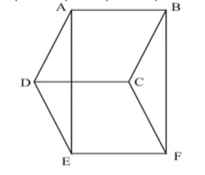A triangle ABC is inscribed in a circle with centre at O, The lines AO,BOandCO meet the opposite sides at D,E,andF, respectively. Prove that 1AD+1BE+1CF=acosA+bcosB+osC
Step by step video & image solution for A triangle A B C is inscribed in a circle with centre at O , The lines A O ,B Oa n dC O meet the opposite sides at D , E ,a n dF , respectively. Prove that 1/(A D)+1/(B E)+1/(C F)=(acosA+bcosB+ccosC)/ by Maths experts to help you in doubts & scoring excellent marks in Class 11 exams.
Updated on:21/07/2023Similar Questions
A triangle ABC is inscribed in a circle with centre at O, The lines AO,BOandCO meet the opposite sides at D,E,andF, respectively. Prove that 1AD+1BE+1CF=acosA+bcosB+osC
View SolutionThe bisectors of the angles B and C of a triangle ABC , meet the opposite sides in D and E respectively. If DE||BC , prove that the triangle is isosceles.
View Solution
Knowledge Check
The altitudes from the vertices A,B,C of an acute angled triangle ABC to the opposite sides meet the circumcircle at D,E,F respectively . Then EFBC=
AsinABcosAC2sinAD2cosA
An equilateral triangle ABC is inscribed in a circle with centre O. The measures of ∠BOC is 30∘ (b) 60∘ (c) 90∘ (d) 120∘
View SolutionIn a triangle ABC, the bisector of angle A meets the opposite side at D. Using vectors prove that BD:DC=c:b.
View SolutionConsider △ABC.LetIbethe∈centreanda,b,cbethessofthe△opposite→∠sA,B,Crespectively.LetObeanyp∮∈thepla≠of/_\ABCwith∈the△.AO,BOandCOmeetthessBC,CAandAB∈D,EandFrespectively.(OD)/(AD)+(OE)/(BE)+(O)/(CF)=(A)3/8(B)1(C)3/2 (D) none of these
View SolutionConsider △ABC. Let I bet he incentre and a,b,c be the sides of the triangle opposite to angles A,B,C respectively. Let O be any point in the plane of △ABC within the triangle. AO,BO and CO meet the sides BC, CA and AB in D,E and F respectively. If 3−−→BD=2−−→DC and 4−−→CE=−−→EA then the ratio in which divides −−→AB is(A)3:4(B)3:2(C)4:1(D)6:1
View SolutionIn a ABC , If LandM are points on ABandAC respectively such that LMparallel BC
Prove that: ar(LOB)=ar(MOC)
View SolutionIn Figure, ABCD, ABFE and CDEF are parallelograms. Prove that ar(ADE)=ar(BCF)

View SolutionBisectors of angles A, B and C of a triangle ABC intersect its circumcircle at D, E and F respectively. Prove that the angles of the triangle DEF are 90∘−12A,90∘−12Band 90∘−12C
View Solution
